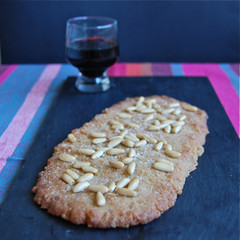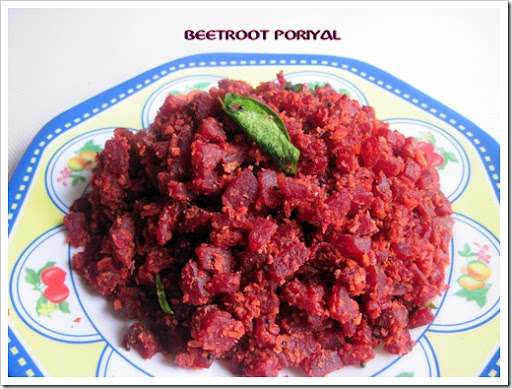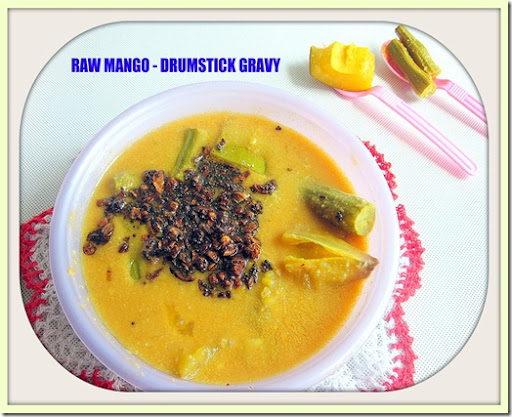lunes, 27 de mayo de 2013
I'm not including a picture because they're just that bad...
Top 5 Reasons Why I Love Thanksgiving
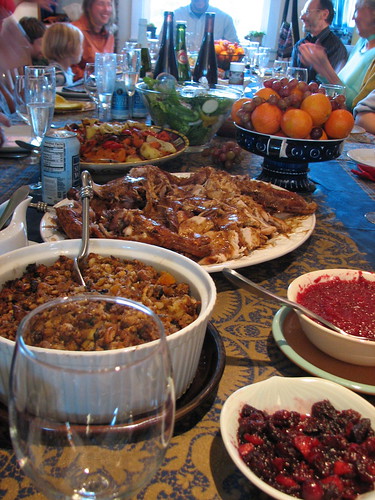
Thanksgiving is hand's down, my favorite holiday of the year. I think I even like it better than my birthday, which is really saying something. So here's why:
1. There is nothing you have to do on Thanksgiving, other than share a meal. There are no religious ceremonies or gift giving. You can say a prayer before eating or watch a parade or play football if you want, but you can also take a nap! It's all good.
2. It's inclusive. Anyone who is in America (or outside of America for that matter) can celebrate this holiday if they want to. It's not about race or religion or nationality, in fact, it's about welcoming and helping those who are newcomers and celebrating the harvest.
3. It's about comfort food. I hear a lot of people complaining about traditional Thanksgiving food, they say turkey is boring, pumpkin pie is heavy and stodgy. To them I say, it's comfort food, not fine dining. Get over it. Besides, this holiday is about sharing a meal with friends and family, what you eat is secondary. Go out for Chinese food if you prefer, that is, if you can find a Chinese restaurant that's open.
4. It's two blessed days off. For most people anyway. That is reason enough to be thankful.
5. Leftovers!
Happy Thanksgiving!
A few favorite past Thanksgiving posts from the archives:
How Thanksgiving became a national holiday
Brussels sprouts with brown butter and hazelnuts recipe
Cranberry coffeecake recipe
Curried Butternut Squash Soup recipe
Pilgrim onion marmalade recipe
Turkey drumsticks braised in cranberry sauce recipe
The Good Food Awards 2012 January 13-14

Now in it's second year, the Good Food Awards comes to the San Francisco Ferry Building this weekend. It's a celebration of food in the categories of beer, charcuterie, cheese, chocolate, coffee, pickles, preserves and spirits. The awards draw attention to the most delicious, authentic (no artificial ingredients) and responsible food (GMO-free, respect and fair compensation). More details on the guiding principles here.
The awards are a great way to learn about some of the best speciality foods being produced in America today and if you come to the award ceremony or the marketplace, a chance to meet the makers firsthand. After the winners are announced, the winning products and the rest of the finalists and even last year's winners, will be available nationwide in a dedicated Good Food Awards e-store on Gilt Taste. Other sponsors include Whole Foods Market, Williams-Sonoma and Bi-Rite Market so expect some of the winners to be carried at those stores as well.
Last year's winners included some of my favorite things, including prosciutto from La Quercia, Red Hawk cheese from Cowgirl Creamery. the Salty Sweet Cashew bar from Charles Chocolates and the Ellelle Kitchen's Central Coast Raspberry jam. If you are not in the industry and attending the Fancy Food Show next week (or even if you are), this is a great way to discover new and tasty things.
Marketplace
Taste, buy and celebrate the award winning products from craft producers in 26 states who are redefining 'good food' by creating products that are not only tasty, but also authentic and responsibly produced.
Saturday, January 14, 9:00am-2:00pm (8:00am-9:00am with Early Access ticket) at the San Francisco Ferry Building
General Admission: $5 suggested donation at the door
Beer &Spirits Garden: $12 (includes 5 tastes and entry to Marketplace)
'Early Access' Tickets: $15
Awards ceremony & reception
Meet the 99 Good Food Award Winners, mingle with Ruth Reichl, Alice Waters, William Werner and many more at the gala reception. Enjoy small plates featuring the winning products (as envisioned by Foreign Cinema, Boxing Room, Bar Agricole and more) and an open bar with famed mixologists, the Bon Vivants.
Friday, January 13, 8-10 pm at the San Francisco Ferry Building
Tickets: $100
Chicken and Salad from Jamie Oliver
domingo, 26 de mayo de 2013
http://feedproxy.google.com/~r/SpanishRecipesinpictures/~3/IRRPpL02P90/sobrassada-stuffed-squid.html
Get the rest in my blog! See you there!
jueves, 23 de mayo de 2013
Chicken Lu'au
Bread Baking Babes Buddies - Hamburger Buns
PIDI KARUNAIKIZHANGU CHOPS / YAM FRY
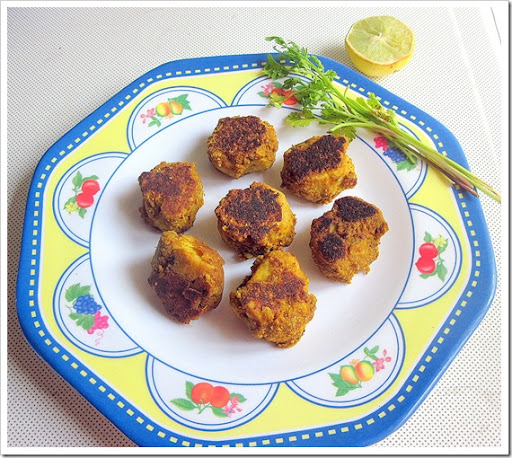
INGREDIENTS
|
METHOD
- Wash & soak the kizhangu in abundant water for sometime to remove all the mud.
- Pressure cook in high flame for 1 whistle.It should be half done.(Skin should be hard to touch)
- Now grind all the items given above adding required salt & water to make a smooth paste.
- Remove the skin of the kizhangu and chop it round.
- Now mix the paste ans marinate for sometime. The kizhangu should be fully coated with the paste.
- Now heat the dosa tawa and sprinkle some oil. Cover Cook the marinated pieces for sometime.Keep the flame low for even cooking. flip the pieces to cook the other side and do the same.
- I Wanted a brown layer to be formed so i kept for a longer time.
- Finally garnish with coriander leaves and add lime juice if necessary.
- Karunai kizhangu Chops is ready !!
NOTE:
- If u want to try kolas , just cook the kizhangu well till it mashes.Mash it with ur hands and add the paste.Mix well. Add finely chopped onions and coriander leaves . Make small balls and deep fry them in batches.
- If u wish to try the same with senai / elephant yam , add little more tamarind paste by avoid the irritation in tongue.Add less tamarind paste to make the same with raw banana.
KITCHEN CLINIC
| Description These tender and tropical perennials grow up to a height of 12-18inches (around 30-45cm) in a spacing of 24-36inches (around 60-90cm). The leaves are around 50 cm in length and consist of many oval leaflets. These plants bloom around spring producing mauve or magenta colored flowers with fragrance. 3-4 years are generally required for the corms to be harvested. These evergreen plants can be grown in container as well if the soil is acidic. Elephant yam is an edible tuber. It is one of the oldest plants known to provide food. It is so called because of its huge size and resemblance with the elephant foot. It is widely consumed as a food crop, usually boiled or baked. Buying tips It is preferred to buy elephant yam from the markets where it is available is a fresh condition. It is preferable to wear gloves while handling the elephant yam as the sap of these plants causes skin irritation.  Culinary usage Karunai Kilangu (elephant foot yam) can be consumed in many ways safely only after removal of its toxic materials. In scarcity of different staple foods, yam is used. So it is also sometimes referred to as a 'famine food'. Before cooking, the wild forms must be soaked in water and boiled for a long time to remove bitterness. The outer brown skin of Karunai is thoroughly washed and removed. Then they are generally cut into small cubes. It can be boiled in clean water as well as with a pinch of turmeric in water. Delicious recipes are available for cooking elephant yam.
In seed bank vaults, the dried and packed seeds are stored at a sub zero temperature. The seeds resemble a flat lens. The light brown, apical seeds of diameter 5mm have membranous wings which are usually 10mm long and about 7mm wide. Medicinal values It has been proved that Karunai Kilangu (elephant foot yam) has many medical benefits as its root is highly stomachic, restorative, carminative and tonic.
Nutritional and dietary information Karunai Kilangu (elephant foot yam) has a rich nutritional profile. It provides energy about 330KJ/100g (approximately). Potassium, Phosphorous and Magnesium are the key minerals found in elephant yam. It also contains trace minerals like zinc, copper and selenium.
|
domingo, 19 de mayo de 2013
http://feedproxy.google.com/~r/SpanishRecipesinpictures/~3/dbinP2pCP1s/rolled-cucumber-salad.html
Get the rest in my blog! See you there!
http://feedproxy.google.com/~r/SpanishRecipesinpictures/~3/r4CuMzXw5g0/mini-chocolate-cakes-with-almonds-and.html
Get the rest in my blog! See you there!
viernes, 17 de mayo de 2013
BEETROOT PORIYAL
I learnt this from my mom.Usually my mom makes this as an accompaniment for keerai kuzhambu.Its my favorite..Last week i made for mor kuzhambu . It was a flavorful and excellent combo.
INGREDIENTS :
- Beetroot - 2 nos (big)
- Moong dal - 2 tbsp
- Salt & water - As needed
- Sambhar powder or Red chilly powder- 1.5tsp
To grind :
- Grated coconut - 3 tbsp
- Small onion - 2 nos
- Jeera - 1/4 tsp
To temper :
- Oil - 1 tbsp
- Mustard seeds - 1/2 tsp
- Urad dal - 1/2 tsp
- Big onion - 1 no (finely chopped)
- Curry leaves - Few
METHOD :
- Chop the beetroot into small pieces and pressure cook along with moong dal , sambhar powder , salt & water.
- Grind all the ingredients given under 'to grind 'into a smooth paste adding little water.
- Now temper the items mentioned above and add the cooked beetroot mixture.
- Then add the ground coconut paste and saute well till the raw smell emanates.
Enjoy with sambhar/ mor kuzhambu / Keerai kuzhambu with a papad .
KITCHEN CLINIC :
| BEETROOT : Beetroot contains sodium, potassium, phosphorus, calcium, iodine, iron, copper, Vitamins B1, B2, B3, B6 and C. Each capsule provides approximately 1-2mg of elemental iron. Benefits and Features of Beetroot
Beetroot for Cholesterol ReductionBeet fiber has been shown to have cholesterol lowering capabilities. In a study on rats with induced high blood cholesterol, a red beet fiber diet caused a reduction of serum cholesterol and triglyceride levels (by 30 and 40%, respectively) and a significant increase in HDL cholesterol (good cholesterol). This diet induced also a significant decrease (almost by 30%) of cholesterol content in the aorta. Beetroot for Blood PressureBeetroot juice has been shown to lower blood pressure in subjects with normal blood pressure. In healthy volunteers, approximately 3 hours after ingestion of 500 ml of beetroot juice, blood pressure was substantially reduced, an effect that correlated with peak increases in plasma nitrite concentration, nitrite being the blood pressure reducing ingredient. Beetroot and nitrate capsules are equally effective in lowering blood pressure indicating that it is the nitrate content of beetroot juice that underlies its potential to reduce blood pressure. It has also been found that only a small amount of juice is needed – just 250ml – to have this effect. Beetroot for Cardiovascular Disease PreventionBetaine, a nutrient found in beets and some other foods lowers plasma homocysteine, a possible risk factor for cardiovascular disease. Betaine supplements are manufactured as a byproduct of sugar beet processing. Betaine "supplementation" has however been found to increase blood LDL cholesterol and triglyceride concentrations in healthy humans, which may undo the potential benefits for cardiovascular health of betaine supplementation through homocysteine lowering. Beetroot for Healthy Liver FunctionBeetroot contains the bioactive agent betaine, which supports healthy liver function. When the liver is functioning properly, fats are broken down efficiently, aiding weight loss, and preventing fatigue and nausea. Glycemic Index of BeetrootIn a study to determine the estimated Glycemic Index of various foods, it was concluded that beetroot has a medium GI of 64. Adverse Reactions from BeetrootBeetroot and especially beet greens contain high levels of oxalate, and should be avoided by individuals with kidney stones containing oxalate Beetroot contains nitrates and when they are cooked and left standing at room temperature, microorganisms that convert nitrates to nitrites begin to multiply, and the amount of nitrites in the beetroot rises. The nitrites combine with amines in the stomach to form nitrosamines, some of which are known carcinogens. |
RAW MANGO - DRUMSTICK GRAVY| PORICHA KUZHAMBU
I learnt this from my MIL. Usually we make this gravy only with drumstick. But during mango season , we make this combination. It tastes great with the excellent flavor of mango. If u don't get sour raw mango ,no problem , u can try this with drumstick alone by adding little tamarind extract to get the tangy taste. We mix this gravy in plain rice with little ghee.Here i've used Vengaaya vadagam for seasoning.I think most of u may not have/aware of this. So i've given the ingredients below to replace vadagam.
Try this simple & delicious poricha kuzhambu. Iam sure u'll love it and start to make it often.
INGREDIENTS
- Raw mango - 1 no ( Medium sized) (cut into cubes as shown in the above picture)
- Drumstick - 2 nos
- Moong dal - 2 tbsp
- Sambhar powder - 1.5 - 2 tsp
- Salt & water- As needed
To grind:
- Grated coconut - 2 tbsp
- Water - As needed.
To temper:( to replace vadagam)
- Mustard seeds - 1/4 tsp
- Urad dal - 1/4 tsp
- Jeera - 1/4 tsp
- Small onion - 10 nos ( cut into small pieces)
- Curry leaves - a few (finely chopped)
- Cooking oil - 1 tbsp
METHOD:
- Pressure cook moong dal by adding a pinch of turmeric powder and a drop of oil. Mash it and set aside.
- Now in a bowl , take the drumstick pieces.Add the required water & cover cook. When it is half cooked, add the cubed mango pieces and add more water if necessary. Once it starts to boil , add the sambhar powder, salt & cooked moong dal. Cover cook till mangoes & drumstick pieces get cooked.{Make sure the mango pieces should not be mushy and dissolved in the gravy}.
- Now grind the grated coconut adding little water to make a smooth paste.
- Mix this paste to the gravy and allow it to boil for sometime. If u feel the gravy is too thick, add water to bring the consistency. (In this step , check the salt & spice, add if needed)
- Suppose if the gravy is too watery after adding the coconut paste , u can add a little amount of rice flour to make the gravy thick.But this step is purely optional.
- At last , season the gravy with vengaaya vadagam or the above mentioned items. If u use the above said items for tempering, saute till everything turns brown. This gives a spl flavor to the gravy.
ENJOY MIXNG WITH HOT PLAIN RICE & A DROP OF GHEE OR SERVE AS A SIDE DISH FOR VATRAL KUZHAMBU / SAMBHAR RICE.
KITCHEN CLINIC:
| DRUMSTICK All parts of drumstick tree are useful and have long been used for nutritional, medicinal, and industrial purposes. The drumstick pods or fruits are used as a vegetable in curries and soups and very popular in Indian food. Crushed drumstick leaves are used as a domestic cleaning agent; powdered seeds are used for clarifying honey and sugarcane juice, and for purifying water. Moringa seeds produce oil, also known as Ben oil, which is a sweet non-sticky oil that doesn't become rancid. This oil is used in salads, for lubricating machines, and in perfumes and hair-care products. Drumstick and HealthQuick FactsAlmost all parts of the drumstick tree have medicinal value. The small, round leaves are especially beneficial in treating many ailments because of their high iron content and many medicinal properties. Drumstick leaves can be eaten fresh, cooked, or stored as dried powder for many months without refrigeration, and reportedly without loss of nutritional value. Where starvation is imminent, consuming the drumstick-leaf powder can be life-saving. According to the Trees for Life organization, "ounce-for-ounce, Moringa leaves contain more Vitamin A than carrots, more calcium than milk, more iron than spinach, more Vitamin C than oranges, and more potassium than bananas," and that the protein quality of Moringa leaves rivals that of milk and eggs. Because of the high calcium, iron, and vitamins, drumstick leaves can be used as a wonderful tonic for infant and growing kids and teens to promote strong and healthy bones and for purifying the bloodstream. To prepare the tonic, drumstick leaves should be ground with water, filtered, and mixed with milk. Drumstick-leaf juice is also very beneficial for pregnant women as it can help them overcome sluggishness of the uterus, ease delivery, and reduce post-delivery complications. In India, drumstick leaves are boiled in water and salt, the water is drained, and the leaves are served with ghee (clarified butter) to lactating mothers to increase breast milk. Drumstick leaves are very useful in treating wheezing, asthma, bronchitis, and tuberculosis. A soup prepared by boiling a handful of leaves in 3/4 cup water for 5 minutes and cooled is served to those with respiratory problems. A little salt, pepper, and lime juice can be added to this soup. Drumstick has antibacterial properties and as such is very useful in preventing infections such as those of the throat, chest, and skin. Drumstick soup can be prepared from the leaves, flowers, and pods and used for this purpose as an antibiotic. Dried and powdered bark of the drumstick root can also be used for fungal skin infections. Drumstick leaves, flowers, and seeds are useful in treating sexual debility and weakness. A teaspoonful of fresh drumstick-leaf juice mixed with honey and a glass of tender coconut water taken 2-3 times a day is a wonderful remedy for digestive disorders like diarrhea, dysentery, colitis, jaundice, and cholera. Drumstick-leaf juice is also effective in treating urinary disorders such as excessive urination. Drumstick-seed oil is useful in treating conjunctivitis. Fresh drumstick-leaf juice mixed with lime juice can also be applied to treat pimples, acne, and blackheads. |


